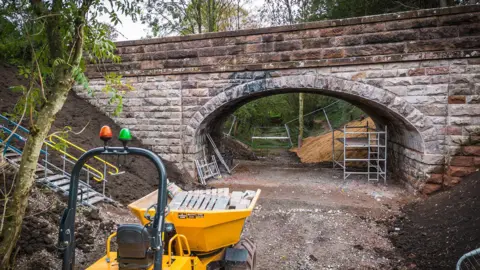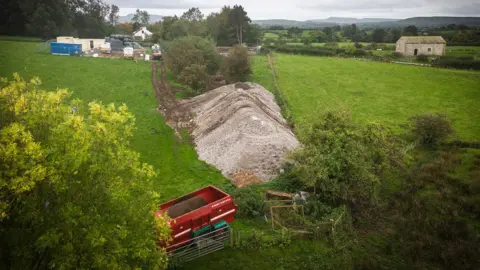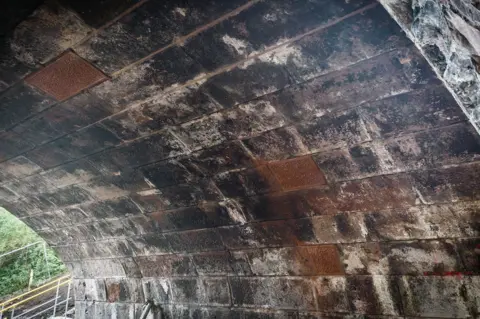'Overloaded' bridge to open without weight limits
 HRE
HRE- Great Musgrave Bridge is to open without weight restrictions after the removal of concrete infill
- Campaigners said it was a "breathtaking turnaround" after earlier claims by a government agency that the bridge was overloaded and unstable
- In 2021, National Highways poured tonnes of concrete under the bridge to support it, citing safety
- The government agency was subsequently denied retrospective planning permission by the local council and ordered to remove it
A bridge infilled with concrete because a government roads body said it was "overloaded" and unstable, is to reopen without any additional strengthening or weight restrictions.
In July 2021, National Highways (NH) poured hundreds of tonnes of stone and concrete under Great Musgrave Bridge in Cumbria, but was then refused retrospective planning permission and ordered to remove it.
Transport campaign organisation the HRE Group said it was a "breathtaking turnaround".
NH said the infill was a "valid solution" for safety and maintenance, but it recognised the "strength of feeling" about the bridge.
Graeme Bickerdike, from the HRE Group, said, for two years, NH had "told anyone who’ll listen that the bridge was weak and infilling was necessary" for safety reasons.
"But this contradicted all the available engineering evidence," he said.
"The bridge’s return to its rightful place as a historic landscape asset is welcome, but the fact that no strengthening was needed completely undermines National Highways.”
NH head of historical railways, Hélène Rossiter, said: "Our decisions at the bridge were driven by safety."
 HRE
HRENH originally said the infill was essential to stabilise the Victorian structure, which it claimed was in danger of being "overloaded".
The roads agency said the bridge, built in 1862, was at risk of collapse if used by heavy vehicles.
But opponents to the infill scheme claimed it could hold lorries weighing up to 44 tonnes.
More than 900 people objected to the maintenance work.
Eden District Council, the authority then in charge of the site, refused retrospective planning permission and ruled the concrete had to be removed by 11 October.
The bridge has been closed for the past 13 weeks.
Ms Rossiter said NH had "worked to a careful methodology" to remove the infill, and a capacity assessment had then been carried out.
"It confirms that the bridge does not require a weight restriction and is able to carry all types of vehicle," she said.
On its website in September, NH said "refurbishment work and resurfacing of the deck" had removed the need for a weight restriction.
 HRE
HREMr Bickerdike said NH should have known the bridge was stable.
He said there was "no meaningful difference" between the condition of the bridge before and after infilling, and the refurbishment only involved "localised repointing and repairs to stonework damage caused by excavation of the concrete".
NH said it had replaced and pinned dropped and damaged stonework, repointed mortar and open joints, and resurfaced the deck to make it more waterproof.
The bridge is due to reopen no later than 18:00 BST on Friday, it said.
Ongoing maintenance and an annual inspection would be necessary, the government agency added.
Follow BBC North East & Cumbria on X (formerly Twitter), Facebook and Instagram. Send your story ideas to [email protected].
